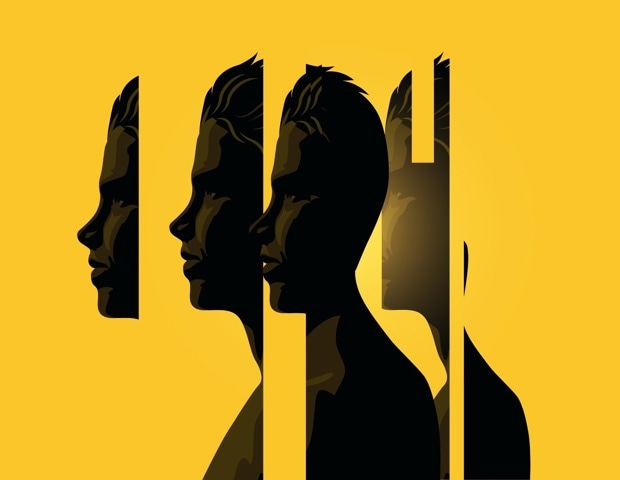School-aged kids will create textured paintings in this fun project. Our basic techniques can easily be used at home or in the classroom.

Adding Texture To Art
Artists often add texture to their creations in many different ways. Today, we will be using a lightweight spackling product. This medium is best suited for an abstract or loose painting technique. The spackling finishes to a light foam-like texture which is excellent for helping kids explore textured elements within their art. The artist can also choose to tint the medium with acrylic paint before using, or paint over the textured medium once it is dry.
Related: Learn about using Implied Textures with our free printable worksheet.
Supplies Needed to Make This Textured Painting Art Project

- Watercolor Paper – Or other heavy bodied material such as cardstock, canvas or cardboard.
- Dap Fast’N Final Lightweight Spackling
- Acrylic Paint – Various Colors
- Palette Knife
- Paper Plate – Or Paint Palette
- Paintbrushes
- Water
- Paper Towels
Directions to Make A Textured Painting
First, decide if you want to paint with colored medium, or add the paint over the medium once it is dried. If painting over dried textured medium, skip to Step 2.
Step 1

Begin by using a clean palette knife to place a small amount of lightweight spackling medium onto the paper plate. Add acrylic paint onto the medium and stir with palette knife to combine. I find that this medium tints very well so only a small amount of paint is needed.
Tip: This spackling dries quickly. Only remove the amount of medium needed and cover container when not in use.
Step 2

Then, scoop a small amount of spackling medium onto the edge of the palette knife. Scrape medium across the page to begin adding texture. Here, we are slowly lifting the palette knife from the page to create a faded effect with the texture.
Step 3

Explore more ways to add texture. Here, the spackling is added to the edge of the palette knife and is smoothly spread across the page to create a more consistent texture.
Step 4

Add large blobs of spackling medium to the end of your palette knife. Press the spackling to the paper and pull palette knife away to create flower petals.
When textured layer is complete, set project aside to dry. Dry time will vary based on texture thickness.
Step 5

When the spackling medium is dry, begin adding color to your design with acrylic paints. Tip: Paint the background of the design first and continue to work your way to the foreground.
Step 6

Finally, add finishing highlights, shadows or details to your project.
Finished Textured Painting Art Project

I love the use of textures in our paintings! Since these projects are made on paper, they are easily clipped or displayed in your preferred style.
Our Experience Making this Textured Painting Art Project
This was such a fun medium to explore! I love how lightweight this spackling is and it dries quickly, too! Since the spackling dries to a foam-like consistency, kids don’t have to worry about the medium cracking or flaking off of their paintings. I can’t wait to make more abstract designs using this medium combined with other tools and application methods.
Prep Time
5 minutes
Active Time
30 minutes
Additional Time
2 hours
Total Time
2 hours 35 minutes
Difficulty
Medium
Materials
- Watercolor Paper – Or other heavy bodied material such as cardstock, canvas or cardboard.
- Dap Fast’N Final Lightweight Spackling
- Acrylic Paint – Various Colors
Tools
- Palette Knife
- Paper Plate – Or Paint Palette
- Paintbrushes
- Water
- Paper Towels
Instructions
First, decide if you want to paint with colored medium, or add the paint over the medium once it is dried. If painting over dried textured medium, skip to Step 2.
- Use a clean palette knife to place a small amount of lightweight spackling medium on a paper plate. Add acrylic paint onto the medium and stir with palette knife to combine. This medium tints very well so only a small amount of paint is needed. Tip: This spackling dries quickly. Only remove the amount of medium needed and cover container when not in use.
- Scoop a small amount of spackling medium onto the edge of the palette knife. Scrape medium across the page to begin adding texture. Try slowly lifting the palette knife from the page to create a faded effect with the texture.
- Explore more ways to add texture. For example, add spackling to the edge of the palette knife and smoothly spread it across the page to create a more consistent texture.
- Add large blobs of spackling medium to the end of your palette knife. Press the spackling to the paper and pull palette knife away to create flower petals. When textured layer is complete, set project aside to dry. Dry time will vary based on texture thickness.
- Add color to your design with acrylic paints. Tip: Paint the background of the design first and continue to work your way to the foreground.
- Add finishing highlights, shadows or details to your project.
Notes
Textured Painting Art Variations
- Draw a quick design idea on paper prior to adding texture.
- Explore with different tools and methods to add unique textures to your art.
- Use a basic drywall mud in place of the lightweight spackling.
Textured Painting Art Variations
- Draw a quick design idea on paper prior to adding texture.
- Explore with different tools and methods to add unique textures to your art.
- Use a basic drywall mud in place of the lightweight spackling.
Other Fun Textured Art Projects from Kids Activities Blog
Did your kids have fun exploring textures in art? What designs did they choose to create?

 PARENTING TIPS
PARENTING TIPS PREGNANCY
PREGNANCY BABY CARE
BABY CARE TODDLERS
TODDLERS TEENS
TEENS HEALTH CARE
HEALTH CARE ACTIVITIES & CRAFTS
ACTIVITIES & CRAFTS

